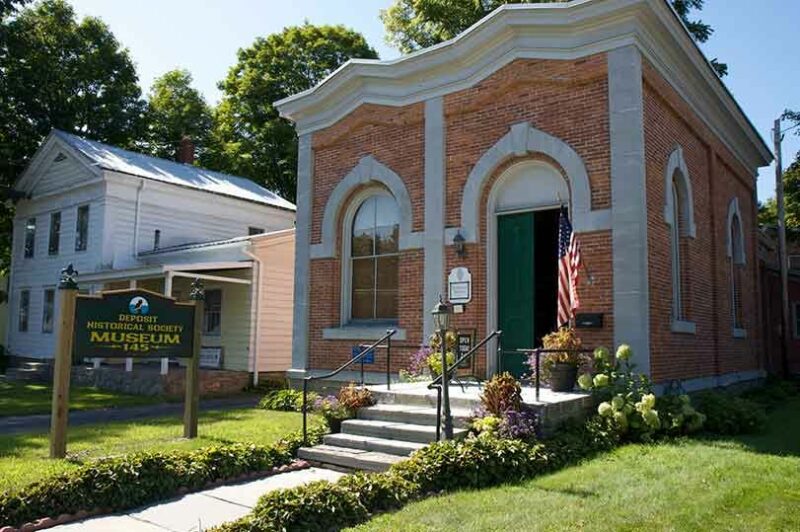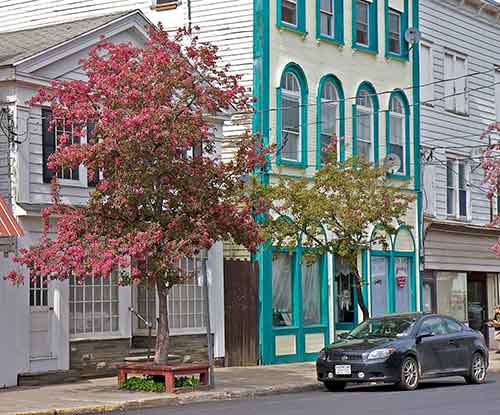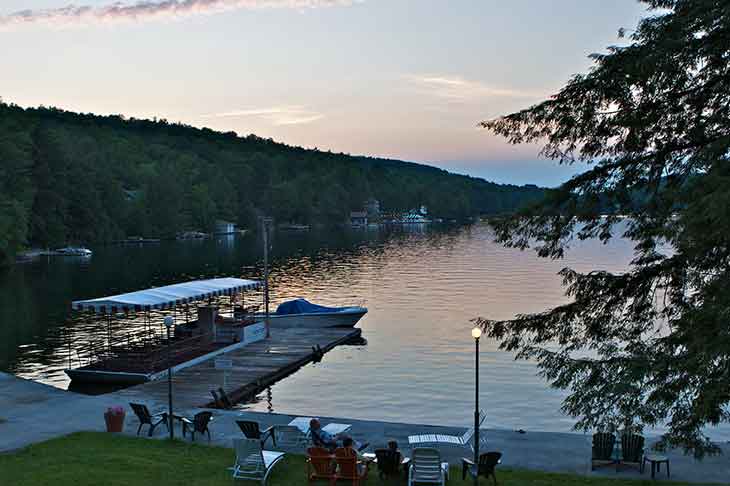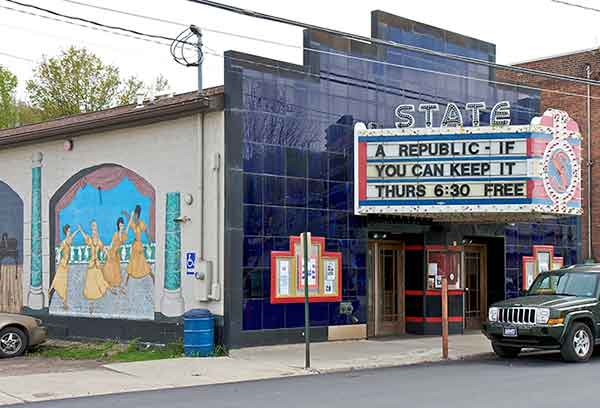Historic Deposit
Graciously provided by the Deposit Historical Society
Deposit is situated in the valley of the Delaware, sixty miles from its source, nestled among mountains which surround it on all sides, with their summits nearly a thousand feet above the bed of the river. (Illustrated History of Delaware County 1880).
The name Deposit was logical because in early times vast quantities of pine lumber were drawn in winter on sleighs, from as far away as the Susquehanna, and deposited on the banks of the river here to await the Spring high waters when the logs were fashioned into rafts sometimes as large as 200 feet in length, and taken to Philadelphia’s market. This was in most cases the only cash income for these early settlers, who did business the rest of the year by bartering and the giving of notes of promise to pay.
Before the coming of white settlers, this part of the Delaware River Valley was inhabited by Indians from several different tribes. The Lenni Lenapes, or Delawares, were most numerous, but the Mohawks held the upper hand. There were also some Oneidas and Tuscaroras. Their council ground, where they held public meetings and performed ceremonial dances, was on a level piece of ground about 8 rods square, situated a few feet south of the present location of the Revolutionary Cemetery. On the flats below the railroad they had cleared 30-40 acres of land where they raised corn and also had a number of apple trees.
To the Indians this area was known as Koo Koose (Cookose, Cookhouse) the place of owls. The local chapter of D.A.R. has adopted the name Koo Koose and the Deposit Historical Society has adopted the owl for a logo.




The first permanent settler was John Hulce who came from Orange County in the Spring of 1789 and settled on the west side of the river at the northerly side of the village. Next was Phillip Pine who came from Fishkill on the Hudson in 1791. Other residents came – including Jonas Underwood and Henry Evans.
In 1790 Captain Nathan Dean a native of Taunton, Massachusetts, removed to Kortright, Delaware County, where he remained until June 1791. Then, as there were no roads, he lashed two canoes together and loaded his family and goods thereon and floated down the river to Cook-house, where he found an empty log house and lived there until he could provide one for his family on his farm consisting of two lots of two hundred acres each covering that part of what is now Deposit, in Broome County, of which he was the first settler. Later streets were laid out and the area became known as Deansville. In 1811 the village, containing twelve dwellings, on the westerly side of the river, on land consisting of Lot No. 43 of the Evans patent, containing 156 acres extending only to “the property line” was incorporated. In 1851 the charter was amended to include 400 acres in the Town of Sanford, Broome County. A provision was inserted that the village, except for elections and schools, should be regarded as belonging to either or both counties. The next and present charter, made in 1871, was a very special act of the State Legislature because of the unique location of the Deposit in two counties. We even have a special date for village elections. But our dual “nationality” has created some problems over time.
Logging was at first the main industry as settlers cleared the land for residential purposes. Then this part of New York State became agricultural with some very large farms in existence. But the rebuilding of highways and changing economy has reduced farming to a minimum.


